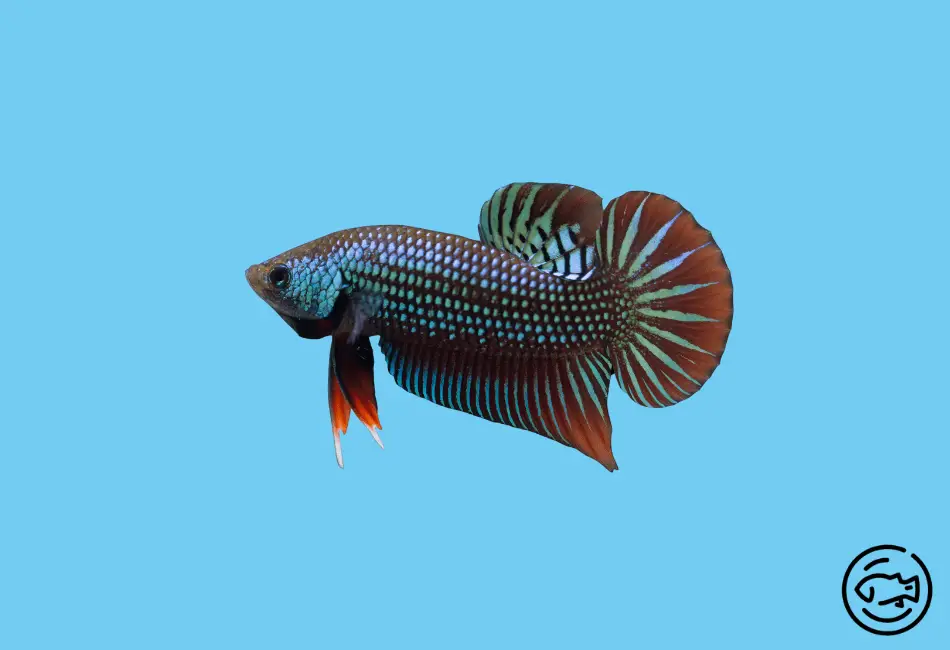The Betta family of fish is quite popular, and most people immediately conjure up images of domestic animals when they think about Bettas, as they are available in practically any establishment that offers aquatic animals.
They are attractive fish with long fins gliding effortlessly over the water.
Betta fish are popular among rookie aquarists since they are straightforward critters requiring little maintenance.
Despite being a wild betta, it has many characteristics with domestic betta fish. However, how are Betta Mahachaiensis different from our domesticated animals, and in what ways will you ensure they are well taken care of?
Betta Mahachaiensis is only an original Betta that still exists in the wilderness, with much of its colors being intrinsic, and its fins are smaller than the domestic Betta’s.
Many aspects of their care are comparable, including the food they eat and their means of reproduction. However, several elements that are different are easily recognizable, such as your tank and its source.
To provide Betta Mahachaiensis with a good environment, it is crucial to understand this fish before introducing it to your aquarium.
Origins
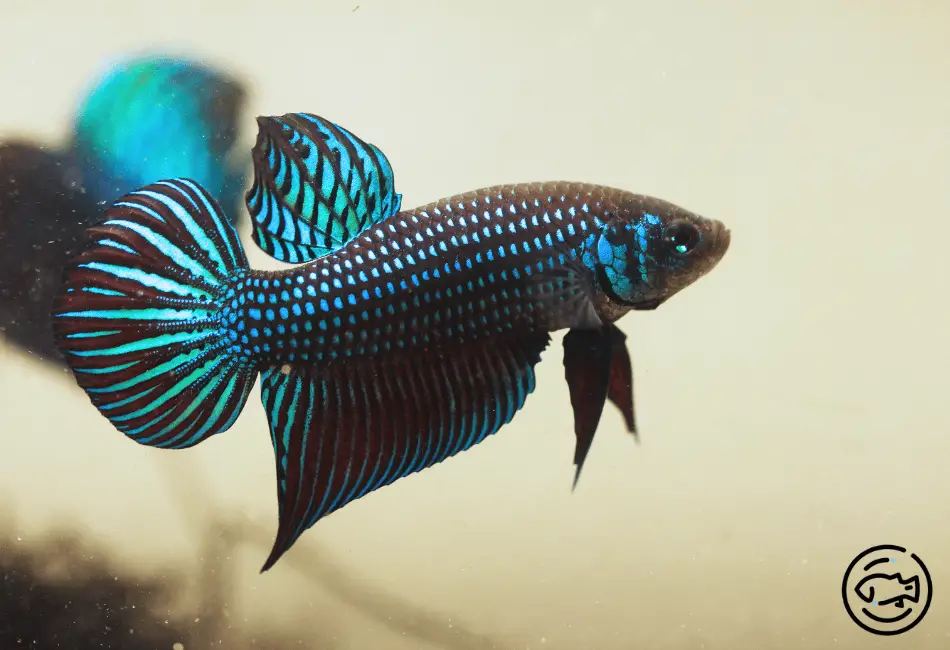
The betta species known as Betta mahachaiensis is found in central Thailand, close to Bangkok. The initial location was found in the province of Samut Sakhon, southwest of Bangkok; however, it has also been seen in the surrounding provinces of Samut Prakan Samut and Songkhram.
Betta mahachaiensis was initially believed to be a crossbreed of different betta species.
It wasn’t until 2012 that a group headed by a researcher ( Dr. Kowasupat) identified it and incorporated it into the category of Splendens together with at least species amounting to five: Betta siamorientalis, Betta smaragdina, Betta imbellis, Betta stiktos, and Betta splendens.
It was included in the splendens family based on physical traits like body coloring, decoration within the fins, and the glare of its body scales.
Habitat
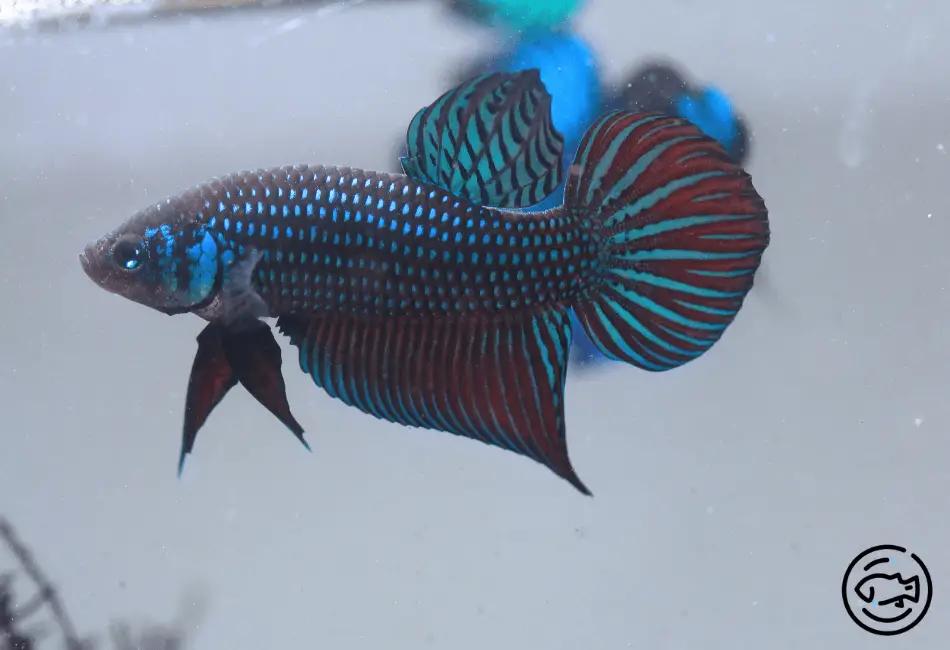
Their natural environment consists primarily of Nipa palm trees in slightly salty waters, making them difficult to seize and locate.
They can hibernate and breed in a setting created by these palms.
Males construct their nests within the plant’s phytotelmata, and the water is best for microorganisms that supplement them with food because the plant’s fallen leaves add tannins.
The natural environment of Betta mahachaiensis is under grave threat due to human activity and a constantly expanding population.
Farmers have forced this species to relocate their habitats away from human structures and agricultural fields, putting them at grave risk.
Due to these dangers brought on by humans, Betta mahachaiensis is amongst the most threatened betta species.
Body Appearance
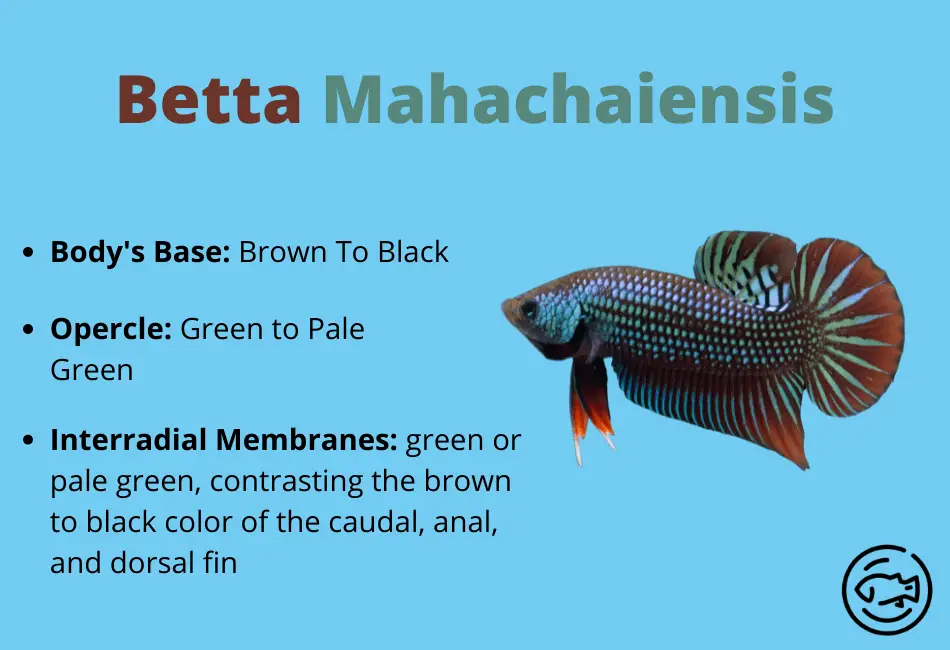
The initial character set helps to differentiate it from congeners: Brown to black is the body’s base coloring, with pigmentations ranging from dazzling green to pale green.
On the opercle, two adjacent longitudinal bands are brilliant shades of green to pale green, and the opercular layer is devoid of red spots and ranges in color from brown to black.
The interradial membranes are a beautiful green or pale green, contrasting the brown to black color of the caudal, anal, and dorsal fin rays. This makes the anal fin rays brown with the pelvic fin brown as well.
The Betta mahachaiensis has a lateral black point on its dorsal fin, and in a sunnier atmosphere and under Light Emitting Diodes (L.E.D) illumination, it will appear more bright green.
Consecutive green scaling with a dark line splitting it into two segments may be seen on its cheeks. It may grow to a maximum length of 5.2 ounces (males) and 4.8 ounces (females), making it, along with Betta smaragdina, the largest Betta from the splendens complex.
Males have larger fins and are more colorful than females.
Also Read: Candy Cane Coral – Care, Tank Mates, Reproduction & More!
Comparison Of Betta Mahachaiensis With Betta Smaragdina
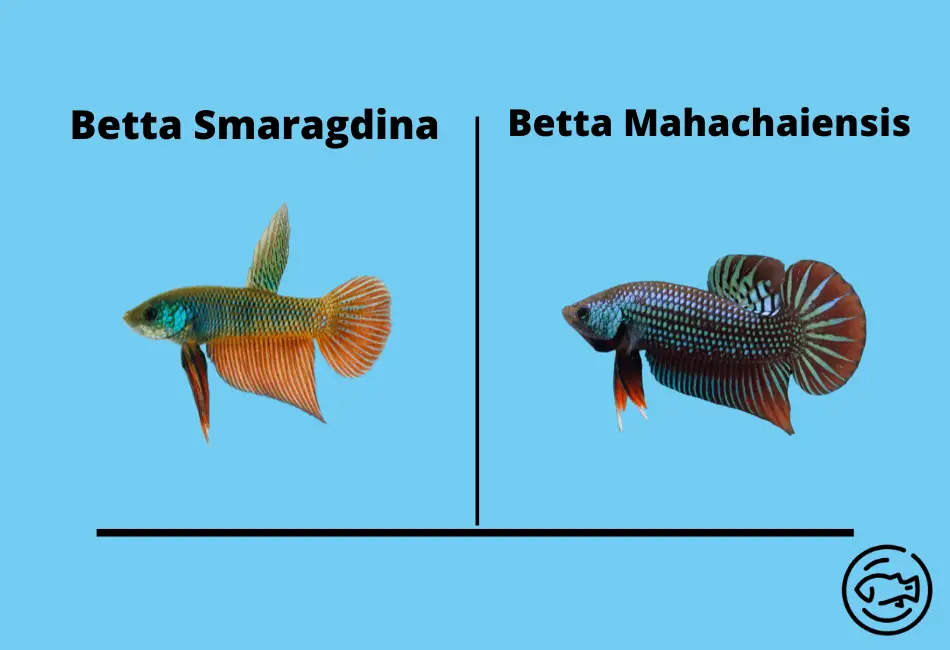
In regards to outward appearance, Betta smaragdina is the species that resembles Betta mahachaiensis the most. However, with a little explanation, it ought to be pretty simple to distinguish between the two species.
To start with, Betta Mahachaisensis has cheeks that have been scaled.
Smaragdina, on the other hand, has more extensive, snakeskin-like scaling across its face that extends to its body.
Mahachaiensis possesses a lot of scales that are plated and lacks this characteristic scaling. The darkened stripe on its cheeks and more extensive, less snakelike scales make this pattern even more apparent.
Smaragdina has orange to red ventrals with possibly white tips, whereas Betta mahachaiensis has black ventrals with either blue or green accents.
Betta mahachaiensis anal fins often have a sky blue tint, whereas those of Betta smaragdina typically have an orange color with blue accents.
Tank Requirements

The ideal tank arrangement is essential for your pets’ health, and it is not advised to keep betta mahachaiensis in jars, even though common Betta is occasionally maintained in them.
Keeping these wild betta fish in aquariums is recommended to keep the water level low.
The recommended depth of the tank for one mahachaiensis is 12 gallons, and you have to give them adequate room & keep them off from fighting, so be sure to add a set of these fish to a tank that is close to 20 gallons in size.
The betta mahachaiensis are recognized to locate any openings above the tank; if there are any, they attempt to leap through them, ensuring a cover.
The cover will also keep moisture, regulate the water’s temperature, and increase air humidity.
Water Conditions And Tank Lighting
Betta mahachaiensis tank water should be between 72°F and 79°F in temperature and have a pH of between 5-8.5.
Betta mahachaiensis can survive in brackish and even saline water in the habitat. Even though you could salt your water to make it more like their environment, it’s sure to cause more damage.
Few plants can thrive there, and maintaining stable conditions is more complicated, and they often function well in clean groundwater as well.
Betta mahachaiensis are shy fish that like dim light and great hiding spots.
Ensure to include a lot of tunnels while constructing the new aquarium for the fish.
The tank should have a lot of greenery, notably drifting flora.
Java fern, anubias, and cryptocorynes are a few plants ideal for the wild betta mahachaiensis’ habitat, and hardscapes like stones & wood are ideal places to hide for fish.
Betta Mahachaiensis Tank Mates

When kept with other fish, this lovely kind of fish is relatively pleasant, although it is recommended to maintain it with other members of its species than adding it to a communal tank.
Considering they pose no harm, they get along well with calm fish that are smaller.
It is recommended to keep male fish apart if you can since they occasionally fight and tend to be a little hostile.
A few males can be introduced to the same tank if the container is large enough for them to remain apart from one another.
Additionally, if the tank is large enough, you may keep Asian fish like Kuhlii loach alongside the betta mahachaiensis.
Nutrition & Betta Mahachai Feeds
Because they are both carnivores and insectivores, wild betta mahachaiensis may be offered both insects and other kinds of animal flesh meals.
They appreciate creatures that may enhance the color of the fish, such as bloodworms, mosquito larvae, daphnia, and red daphnia. Flakes and pellets are okay with dry food, albeit they might not always eat it.
No matter what you feed your fish, make sure it’s a high-quality food that’s nutrient-dense and abundant in proteins, vitamins, and minerals.
Breeding Of Betta Mahachaiensis
Since you can give your fish excellent prudence, breeding wild Betta mahachaiensis is not tricky.
The pair has to be conditioned beforehand, and live meals can provide additional proteins that will strengthen the animals before mating.
The male can be placed in the spawning tank and allowed to construct his nest after the duo has been conditioned for one to two weeks.
Use a container where the feminine may be placed to force the pair to interact.
When the two are prepared, they copulate, with the male caring for the eggs. Immediately as the breeding occurs, you should eliminate the female since the male would perceive her to be intruding.
It will be much simpler to pair them if you have already succeeded in keeping them together as one. If the pair haven’t previously spawned, more training and a reduction of water depth should make breeding relatively simple.
Conclusion
This lovely and jovial fish is worth maintaining, even if it may not be attractive like the household Betta.
If you intend to purchase this species, try to avoid untamed-seized fish due to its vulnerable condition in its native environment.
To establish the ideal habitat, seek a tank with not less than 5 liters of water, and inside it, you put plants.
You may enjoy a magnificent fish that can survive up to four years if you take proper care of it.


